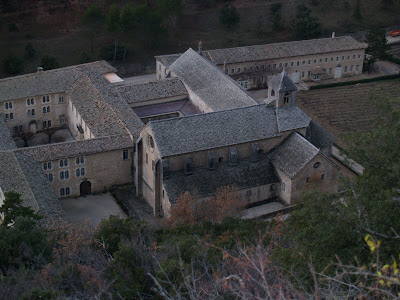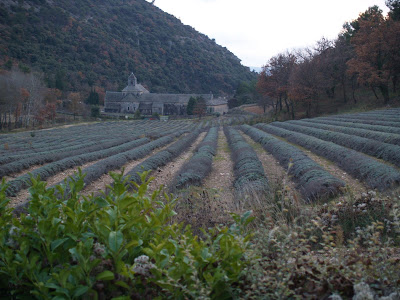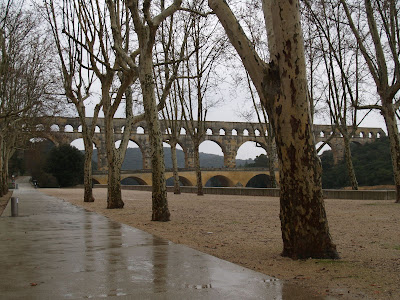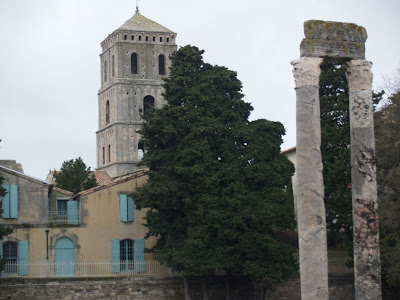bories Heritage: From Roman Gaul to the city of the Popes. Traveling The three podium positions of states with more sites Heritage Site are occupied by Italy in the first place, with 45 sites, followed by Spain with 42 and China with 40. In a few areas for us to such a prominent place in the international arena and that the small size of old Europe have a large part of that world heritage formed, to date, for 911 sites in 151 states.
As is known, the program's goal is to catalog, preserve and make known sites of outstanding cultural or natural importance to the common heritage of mankind.
With few exceptions, that is, visit a World Heritage Site guarantee that the trip will be worthwhile. Although places are usually visited too, it is true that there are often rules of behavior that are essential to prevent damage to conservation and allow future generations can continue to admire them for centuries to come.
France is a well-deserved fourth place in the list, with 35 sites, of which 4 are within walking distance of each other, allowing you to visit a couple of days or even on a day rushing much. They are:
- Puente del Gard (Región: Languedoc Roussillon / Departamento: Gard)
- Arlés à Monumentos romanos y románicos (R egión: Provenza-Alpes-Costa Azul / De partamento: Bocas del Ródano)
- Avignon à Centro histórico (Region: Provence-Alpes-Cote d'Azur / Department: Vaucluse)
- Orange à antique theater and its surroundings and Arc de Triomphe (Region: Provence-Alpes-Cote d'Azur / Department: Vaucluse)
And here we find ourselves ready to go back in time and get carried away the paths of ancient Gaul.
The day we visited the Pont du Gard dawns cold, rainy, gray and very sad.
After crossing the barrier, leave the car in the parking lot, although we can see an assembly ready to receive large influxes of visitors in the large parking our car and only two more.
On the left of the bridge, on the north shore, we see the visitor center, a conference center and a technology museum, but it is completely closed. We walked a few meters to the Gard River with the majestic bridge that explored from all possible angles.
Situated between Nimes and Avignon, this imposing Roman aqueduct 275 meters and 35 huge arches on its upper level, was built in 19 BC, or at least was what had been believed for many years until recent excavations have placed it in the first century AD. He was part of a 50km canal system that allowed carrying 20,000 cubic meters of water a day from nearby Uzès to Nîmes. It is attributed to a son of Augustus and is a better example of Roman engineering was a sophisticated pulley system capable lifting stones up to six tons, which joined with iron clamps without any mortar.
Although drizzle a little, not upset and maybe not as cold as I thought. Come here to see the bridge was worth and enjoy total solitude that environment has been good.
When leaving the parking we have to pay 15 €, that is the combined ticket price (for five people maximum) that allows access to different activities. Overpriced considering that we were unable to visit or the museum or visitor center and that all services are closed.
From here and we went to Avignon is located about 30 km. It is a pretty Provencal village surrounded by 4.3 km of wall beautifully preserved.
We left the car outside the wall and gained access to historic center following a small canal that runs through the old quarter of the dry cleaners. We turn to the central market - which despite being open Sunday - and through a long and deserted shopping street ended at the Place de l'Horloge , where the City Council and at this time, also the Christmas market.
The council hall out a nice crib (crèche , in French) and a table set such as the tradition for the holidays, with a full explanation of each of the dishes from the meal and its meaning. Required by tradition to eat 13 desserts ( les 13 desserts ) to symbolize Jesus and the twelve apostles.
Avignon's historical center is small and can go well walk.
Not far from the town hall square stands the Palace of the Popes , l to cathedral Notre-Dame-des-Doms , the church of St. Didier, Petit Palais and the Saint Benezet bridge .
The famous Pont Saint Benezet, was immortalized in the children's song says ... "Sur le pont d' Avignon on and on and dance dance, sur le pont d'Avignon on and dance tout le monde" although the 22 arches that originally had only four remain standing. Completed in 1185, was destroyed during the Albigensian Crusade and rose again in 1234. The small chapel of St. Nicholas suffered also changes during this period and in 1513 he added a Gothic apse.
A four steps, is the Palace of the Popes an immensely large building. It's easy to find and as they say here "all roads lead to the papal palace."
is the largest Gothic palace in Europe, built in the fourteenth century as a fortified palace for the papal court, a symbol of great power between 1309 and 1377.
is interesting lost between chambers and rooms, play to imagine how they lived in the palace and to realize the exquisite taste of Pope Clement VI. The exhibition is divided into two sections: the old palace, built by Pope Benedict XII, between 1334 and 1342, and the new palace, begun under his successor Clement VI and ended in 1348: Two popes, two styles. Monastic sobriety and simplicity of the old palace reflected the austerity of Benedict XII, while the new palace has a richly decorated in keeping with the likes of Clement VI, the great patron and lover of art and elegance.
We had already visited years ago, so this time we only to walk around its exterior.
Long before Vincent Van Gogh Arles fell for (more on the post http://mttj-viajesyexperiencias.blogspot.com/2011/02/recordando-van-gogh-en-la-provenza.html ) and what the Romans did centuries ago. Its geographical location between the junction of the Rhone and the Via Aurelia was a growing interest in Rome. a city small has important heritage is no accident. He took advantage of the occasion when he turned to war between Caesar and Pompey. While supported Pompey Marseille, Arles sided with Caesar. When he crushed the aspirations of the first to Arles became the first city in the region. A theater with capacity for 12,000 people and an amphitheater for 20,000, are evidence of the importance it had in those days. Subsequently, succeeded him high and low but never lost its prestige as a great maritime hub and important river port.
The old city is a maze of alleys and cobbled Rue Hotel de Ville leads us to the Place de la République where was the ancient Roman arena.
Today is not a trace, but it's a very monumental plaza, with the city hall, post office (La Poste ), a fountain with the obelisk in the center and especially the church San Trophimus dedicated to the saint who brought Christianity to France. The World Heritage Arles includes both Roman monuments such as the Romanesque and the most significant example is San Trophimus, whose porch is a splendid example of Romanesque Provence.




was sculpted between 1152 and 1180 by the clerics who cultivated associated with an image of the vision of San Juan with the Final Judgement representing Jesus in the center surrounded by the four evangelists. We visited the inside that contains some interesting carved marble sarcophagi a thousand and one watermark, but its charm is undoubtedly on the facade, which is worth not miss a single detail. The cloister though quite black, is also very interesting, especially because you can access the terrace and admire it from a different perspective. In this time is holding an exhibition of holy men , terra cotta figures that usually adorn the stalls. In Provence there are several artisans santonniers and you can find truly wonderful. This year marks the 56th edition of the show and although we visited in 92 in the same place was much more lucid, also deserves punishment.
To visit the amphitheater
and Roman theater, you can buy a ticket from 6 € which includes both monuments. The amphitheater (year 90dC) is also used as a bullring. Colossal size (136m x 107m) is larger and more older than that of Nimes.
In the Middle Ages houses were built inside so that the outer walls of the amphitheater were the wall function. To complete the fortifications were added about watchtowers from which you can enjoy one of the best views of the old city, the new quarters, the Rhone and the chain of the Alpilles.
A few steps away is the Roman Theatre , great part of which has been restored.
Near the river you can see the Baths of Constantine and a small fragment of the ancient wall embedded in a Gradient building. In fact, this entire area along the river is very deteriorated.
City Orange also has a strong Roman influence, which highlight the triumphal arch and great ancient theater.
Like other cities still had a very vivid memory, Orange had almost completely disappeared from my record. We could not then visit the theater cause I found it closed, so was particularly interested in returning. Admission is € 8 but includes an audio guide in English and visiting the Art and History Museum is located just opposite. First we see an interesting visual that summarizes the 2000 year history of the theater since its construction, its usefulness as a fortress during the Middle Ages, its subsequent recovery efforts and the current function.
impress his colossal dimensions, especially from the higher tiers, not recommended for vertigo sufferers. It was built during the reign of Caesar Augustus and could accommodate 10,000 spectators. The stage wall of 103m wide and 37m high is one of the three that remain today (the other two are in Syria and Turkey) and that Louis XIV said, "was the most beautiful wall of his kingdom" . The old decorated with statues, friezes and marble columns are just a few samples, with the presiding image of the emperor Augustus fun.
The inner part the theater you can see different multimedia representations called "the ghost of the Theatre" to recreate the different stages that ever lived. Every summer they held a major international opera festival.
can not overlook the great triumph to rco , also built during the reign of Emperor Augustus on the road linking Arles and Lyon, but it seems it was rebuilt by Emperor Tiberius. He rose in honor of the founders of the colony and is the domination of Rome over the Gauls as well illustrated by the arc friezes that tell the stories of successful campaigns by land and sea. Military shields and helmets adorning the bottom of the lateral arches belong to Celtic or Gallic troops and their position seems to demonstrate a loss to the Roman troops.
The legacy left by the Romans in these regions of southeastern France show the force with which the settlement took root from the beginning .





















































